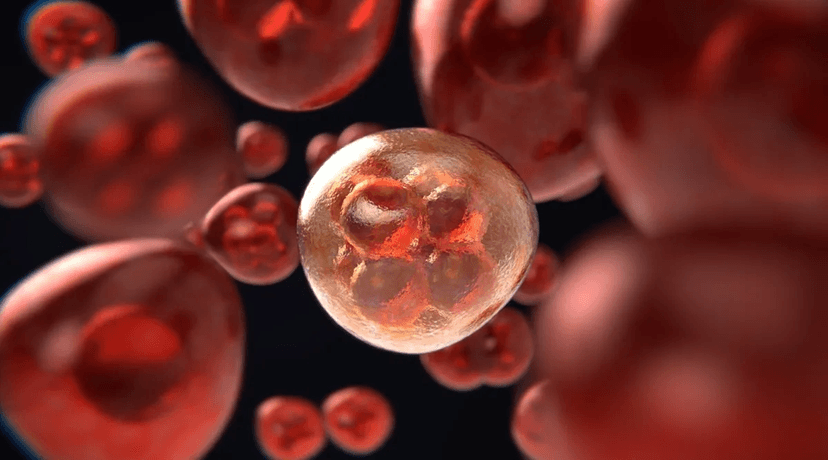
The Ultimate Guide for Patients from Russia Seeking Gastroenterology in the UK
24 Jul, 2024
 Healthtrip Team
Healthtrip TeamNavigating a foreign healthcare system can be challenging, especially when seeking specialized medical care. For Russian patients requiring gastroenterology services in the UK, understanding how to access high-quality treatment can be overwhelming and confusing. You might feel anxious about language barriers, unfamiliar medical procedures, or the complexity of finding the right specialists in a new country. The fear of miscommunication and the uncertainty about the quality of care can add to your stress, making the entire process seem daunting. Our ultimate guide is designed to simplify the process for you. We provide comprehensive information on accessing top gastroenterology services in the UK, including how to find leading specialists, understand treatment options, and navigate the healthcare system with ease. With this guide, you’ll gain clarity and confidence, ensuring you receive the best care available while minimizing stress and confusion.
Most popular procedures in India
Gastroenterology is a specialized field of medicine that focuses on diagnosing and treating disorders of the digestive system. This includes a wide range of conditions affecting various parts of the gastrointestinal (GI) tract, such as:
- Esophagus: The tube that carries food from the mouth to the stomach.
- Stomach: The organ where food is broken down and mixed with digestive juices.
- Small Intestine: The long, coiled tube where most of the digestion and absorption of nutrients occurs.
- Large Intestine: The final part of the digestive system, including the colon and rectum, where waste is processed and expelled.
- Liver: An organ that produces bile, metabolizes nutrients, and detoxifies harmful substances.
- Pancreas: An organ that produces digestive enzymes and hormones such as insulin.
- Gallbladder: A small organ that stores bile produced by the liver.
Common Conditions
Gastroenterologists treat a wide variety of conditions that affect the digestive system, including:
Wellness Treatments
Give yourself the time to relax
Lowest Prices Guaranteed!

Lowest Prices Guaranteed!
A. Gastroesophageal Reflux Disease (GERD): This is a chronic issue where stomach acid frequently flows back into the esophagus. It can cause irritation and discomfort, making it feel like you’ve got a constant burning sensation in your chest.
B. Irritable Bowel Syndrome (IBS): IBS is a common digestive problem that leads to symptoms like abdominal pain, bloating, and changes in your bowel habits. It can make your stomach feel uncomfortable and unpredictable.
C. Crohn’s Disease: This inflammatory bowel disease can cause inflammation anywhere along your digestive tract. It often leads to symptoms like diarrhea, stomach pain, and unintended weight loss.
D. Ulcerative Colitis: Another type of inflammatory bowel disease, ulcerative colitis causes inflammation and ulcers in the lining of the colon and rectum. This can result in symptoms like bloody diarrhea and abdominal pain.
E. Celiac Disease: This is an autoimmune condition where eating gluten damages the small intestine. It can lead to symptoms such as diarrhea, weight loss, and issues with nutrient absorption.
F. Hepatitis: This refers to inflammation of the liver, which can be caused by viral infections, excessive alcohol use, or other factors. It can affect how well your liver functions.
G. Pancreatitis: This is inflammation of the pancreas, which can be either acute or chronic. It’s often caused by gallstones or heavy drinking, and can lead to severe abdominal pain and digestive issues.
Diagnostic Procedures
Diagnostic procedures in gastroenterology are essential for accurately identifying and assessing conditions affecting the digestive system. These procedures help gastroenterologists evaluate the health of the gastrointestinal (GI) tract, diagnose diseases, and determine the most effective treatment plans. Here’s an overview of common diagnostic procedures used in gastroenterology:
1. Endoscopy
Endoscopy is a vital diagnostic procedure in gastroenterology, allowing doctors to directly visualize the interior of the digestive tract using a flexible tube equipped with a camera and light, known as an endoscope. This procedure can be performed through different natural openings, depending on the area being examined. Upper endoscopy, or esophagogastroduodenoscopy (EGD), involves inserting the endoscope through the mouth to examine the esophagus, stomach, and the first part of the small intestine (duodenum). It is commonly used to diagnose conditions such as gastroesophageal reflux disease (GERD), peptic ulcers, and tumors. Lower endoscopy, commonly known as colonoscopy, is used to inspect the colon and rectum. This procedure is crucial for screening colorectal cancer, investigating symptoms like bleeding or chronic diarrhea, and managing conditions like inflammatory bowel disease (IBD). Additionally, sigmoidoscopy focuses on the sigmoid colon and rectum, providing valuable insights into symptoms such as abdominal pain or rectal bleeding. Endoscopic procedures not only aid in accurate diagnosis but also allow for therapeutic interventions, including biopsies and the removal of polyps.
2. Capsule Endoscopy
Capsule endoscopy is a non-invasive diagnostic technique designed to explore the small intestine, an area often challenging to access with traditional endoscopy. During the procedure, patients swallow a small capsule that contains a camera, light source, and transmitter. As the capsule moves through the digestive tract, it captures thousands of images that are transmitted to a recording device worn by the patient. This technique provides detailed visualization of the small intestine, helping to identify abnormalities such as bleeding, tumors, or signs of Crohn’s disease. Capsule endoscopy is particularly useful for diagnosing obscure gastrointestinal bleeding, where the source of bleeding cannot be determined through other methods. The procedure is convenient as it does not require sedation and allows for a comprehensive examination of the small intestine with minimal discomfort to the patient.
3. Barium Swallow and Barium Meal
Barium swallow and barium meal are radiologic procedures that use a contrast medium called barium to enhance X-ray images of the digestive tract.
In a barium swallow, the patient ingests a liquid form of barium, which coats the esophagus and allows for clear imaging of its structure and function. This test is valuable for diagnosing conditions such as swallowing difficulties, structural abnormalities, and gastroesophageal reflux disease (GERD).
A barium meal, on the other hand, involves ingesting barium before X-rays are taken to visualize the stomach and the first part of the small intestine (duodenum). This procedure helps diagnose conditions like ulcers, tumors, and structural abnormalities in the upper digestive tract. Both tests provide detailed images that assist in diagnosing and managing various gastrointestinal disorders.
4. Abdominal Ultrasound
Abdominal ultrasound is a non-invasive imaging technique that uses high-frequency sound waves to create real-time images of the abdominal organs. The procedure involves placing a small transducer on the skin’s surface, which emits sound waves that bounce off internal structures and are captured to form images. Abdominal ultrasound is particularly useful for evaluating the liver, gallbladder, pancreas, and kidneys. It helps diagnose conditions such as liver disease, gallstones, and pancreatitis. The procedure is painless, does not involve radiation, and provides valuable information about the size, shape, and texture of abdominal organs, aiding in the diagnosis and management of various gastrointestinal conditions.
5. Computed Tomography (CT) Scan
A computed tomography (CT) scan is a diagnostic imaging technique that combines multiple X-ray images taken from different angles to produce cross-sectional images of the abdominal area. The CT scan provides detailed and comprehensive views of the digestive organs and surrounding structures. It is particularly useful for diagnosing and assessing conditions such as tumors, abscesses, inflammatory bowel disease, and internal injuries. The procedure often involves the use of contrast agents to enhance the visibility of internal structures and improve diagnostic accuracy. CT scans are essential for planning surgical procedures and evaluating the extent of disease, making them a crucial tool in gastroenterology.
6. Magnetic Resonance Imaging (MRI)
Magnetic resonance imaging (MRI) is an advanced imaging technique that uses strong magnetic fields and radio waves to create detailed images of soft tissues and organs. MRI is especially valuable for visualizing the liver, pancreas, and small intestine. It provides high-resolution images without the use of ionizing radiation, making it a safe option for repeated imaging. MRI is used to assess conditions such as liver disease, pancreatic disorders, and certain types of tumors. It offers detailed insights into the structure and function of abdominal organs, aiding in accurate diagnosis and treatment planning.
7. Endoscopic Ultrasound (EUS)
Endoscopic ultrasound (EUS) is a hybrid diagnostic procedure that combines endoscopy with ultrasound technology. An endoscope equipped with an ultrasound probe is inserted into the digestive tract, allowing for detailed imaging of the GI tract and adjacent structures. EUS is particularly useful for assessing conditions such as pancreatic cancer, bile duct stones, and staging of esophageal cancer. It provides high-resolution images of both the gastrointestinal tract and surrounding tissues, offering valuable information for diagnosis, treatment planning, and monitoring.
8. Laboratory Tests
Laboratory tests play a crucial role in supporting the diagnosis of gastrointestinal conditions.
Blood tests
can include complete blood counts (CBC), liver function tests (LFTs),
and tests for specific markers of inflammation or infection. These tests
help assess the overall health of the patient, detect signs of disease,
and monitor liver and pancreatic function.
Stool tests are used to identify blood, infections, or other abnormalities in stool samples. Common stool tests include fecal occult blood tests for detecting hidden blood, stool cultures for identifying pathogens, and tests for parasites. These tests provide valuable diagnostic information and help guide treatment decisions.
9. Breath Tests
Breath tests measure the presence of specific gases in the breath to diagnose certain digestive conditions.
The hydrogen breath test is used to detect lactose intolerance or small intestinal bacterial overgrowth (SIBO) by measuring hydrogen levels in the breath after the ingestion of specific sugars.
The urea breath test helps diagnose Helicobacter pylori infection, a common cause of peptic ulcers, by detecting carbon dioxide produced from the breakdown of urea by the bacteria. These tests are non-invasive and provide useful information for diagnosing and managing gastrointestinal disorders.
Each diagnostic procedure plays a crucial role in identifying and managing gastrointestinal conditions. By understanding these procedures, you can better prepare for and navigate the diagnostic process, ensuring that you receive accurate and timely assessments of your digestive health. If you have any concerns or symptoms related to your digestive system, consult with a gastroenterologist to determine the most appropriate diagnostic approach for your situation.
Treatment Options for Gastrointestinal Conditions
1. Medication Management
Medications are a cornerstone in treating many gastrointestinal (GI) conditions. The types of medications used vary based on the specific condition:
B. Proton Pump Inhibitors (PPIs): These reduce the production of stomach acid and are used for conditions like GERD, peptic ulcers, and Zollinger-Ellison syndrome. Examples include omeprazole and esomeprazole.
C. H2 Blockers: Reduce stomach acid production and are used for similar conditions as PPIs. Common H2 blockers are ranitidine and famotidine.
D. Prokinetics: These medications enhance the motility of the GI tract, helping conditions like gastroparesis. Metoclopramide is a commonly used prokinetic.
E. Corticosteroids: Used to reduce inflammation in inflammatory bowel diseases (IBD) such as Crohn’s disease and ulcerative colitis. Prednisone and budesonide are examples.
F. Immunosuppressants and Biologics: These are used for more severe cases of IBD to suppress the immune response and reduce inflammation. Examples include azathioprine and infliximab.
G. Antibiotics: Prescribed for bacterial infections like Helicobacter pylori, which can cause peptic ulcers. Clarithromycin and amoxicillin are commonly used.
H. Antispasmodics: Help relieve abdominal pain and cramping in conditions like IBS. Hyoscine and dicyclomine are typical antispasmodics.
I. Laxatives and Stool Softeners: Used to treat constipation. Types include bulk-forming agents like psyllium, osmotic agents like polyethene glycol, and stimulant laxatives like bisacodyl.
2. Lifestyle and Dietary Modifications
Lifestyle and dietary changes are critical in managing and preventing GI conditions. Some essential modifications include:
2. Avoiding Trigger Foods: Patients with conditions like GERD, IBS, or lactose intolerance should avoid foods that trigger their symptoms. Common triggers include spicy foods, fatty foods, alcohol, caffeine, and dairy products.
3. Regular Exercise: Physical activity helps maintain healthy digestion and reduce stress, which can exacerbate GI symptoms.
4. Stress Management: Techniques such as yoga, meditation, and deep-breathing exercises can reduce stress and improve GI health.
5. Hydration: Drinking plenty of water is crucial for digestion and preventing constipation.
6. Smoking Cessation and Limiting Alcohol: Smoking and excessive alcohol consumption can worsen GI symptoms and increase the risk of conditions like GERD and liver disease.
3. Endoscopic Procedures
Endoscopic procedures are essential for diagnosing and treating various GI conditions:
B. Colonoscopy: Involves inserting a similar tube into the rectum to examine the colon. It is used to screen for colon cancer, remove polyps, and diagnose conditions like Crohn’s disease and ulcerative colitis.
C. Endoscopic Retrograde Cholangiopancreatography (ERCP): Combines endoscopy and X-ray to diagnose and treat conditions of the bile ducts and pancreas, such as gallstones, tumors, and pancreatitis.
D. Capsule Endoscopy: Involves swallowing a small, pill-sized camera that takes thousands of images as it passes through the small intestine. This procedure helps diagnose conditions like Crohn’s disease, small bowel tumors, and obscure GI bleeding.
E. Endoscopic Ultrasound (EUS): Combines endoscopy and ultrasound to obtain detailed images of the digestive tract and surrounding tissues, helping diagnose conditions like pancreatic cancer and cysts.
4. Surgical Interventions
Surgery may be necessary for severe or unresponsive GI conditions. Common surgeries include:
B. Cholecystectomy: Removal of the gallbladder, often due to gallstones causing pain or infection.
C. Colectomy: Partial or total removal of the colon, used in cases of colon cancer, severe Crohn’s disease, or ulcerative colitis.
D. Resection and Anastomosis: Removal of a diseased section of the intestine followed by reconnection of the healthy sections, used for conditions like bowel obstruction or diverticulitis.
E. Minimally Invasive Laparoscopic Surgery: Uses small incisions and a camera to perform surgeries, resulting in faster recovery times and reduced risk of complications.
F. Bariatric Surgery: Procedures like gastric bypass or sleeve gastrectomy for treating obesity and related GI conditions, such as severe acid reflux and non-alcoholic fatty liver disease.
G. Sphincterotomy: Surgical incision into the muscle of the sphincter, often used to treat anal fissures or certain bile duct conditions.
5. Alternative and Complementary Therapies
Alternative and complementary therapies can support conventional treatments for GI conditions:
B. Herbal Remedies: Various herbs are used to alleviate GI symptoms. For example, peppermint oil can help reduce IBS symptoms, ginger can alleviate nausea, and chamomile may soothe stomach discomfort.
C. Probiotics: Beneficial bacteria that support gut health by maintaining a healthy balance of gut microbiota. Probiotics can help manage conditions like IBS, antibiotic-associated diarrhoea, and infectious diarrhoea.
D. Mind-Body Therapies: Techniques such as yoga, meditation, and tai chi can reduce stress and improve GI health.
E. Dietary Supplements: Supplements like glutamine and omega-3 fatty acids can support GI health, particularly in conditions like IBD.
6. Behavioral Therapy and Psychological Support
Psychological factors play a significant role in GI health, making behavioural therapy and psychological support crucial:
B. Gut-Directed Hypnotherapy: A specialized form of hypnotherapy that focuses on improving gut function and reducing symptoms of GI conditions, particularly IBS.
C. Biofeedback: A technique that teaches patients how to control physiological functions, such as muscle tension and bowel movements, to manage GI symptoms.
D. Support Groups and Counseling: Joining support groups or seeking counselling can provide emotional support, practical advice, and coping strategies for living with chronic GI conditions. These resources help patients feel less isolated and more empowered in managing their health.
F. Stress Reduction Techniques: Incorporating stress reduction techniques like mindfulness meditation, progressive muscle relaxation, and guided imagery can significantly improve GI symptoms and overall well-being.
By combining these diverse treatment options, patients with gastrointestinal conditions can achieve better symptom management and an improved quality of life. Each treatment plan should be tailored to the individual's specific needs and conditions, with regular consultation and follow-up with healthcare professionals to ensure the best outcomes.
Navigating gastroenterology care in the UK can be a complex process, especially for patients from Russia. However, with the right information and guidance, it becomes much easier to access high-quality treatment and manage your healthcare journey effectively. This guide has provided you with valuable insights into finding the best specialists, understanding available treatments, and navigating the UK healthcare system. Armed with this knowledge, you can approach your gastroenterology needs with confidence, ensuring that you receive the care you deserve in a supportive and informed manner.
Related Blogs

Unparalleled Medical Expertise at Cleveland Clinic London
Get access to world-class medical expertise at Cleveland Clinic London

Vulvar Cancer Treatment in the UK: Expert Care for Patients from Russia
Vulvar cancer, though rare, is a serious condition that requires

Lymphoma Treatment in the UK: Advanced Care for Patients from Russia
The United Kingdom is renowned for its cutting-edge medical treatments,

Exploring Medical Tourism in the UK for Russian Patients
Medical tourism is a growing trend among Russian patients seeking

Advances in Lymphoma Treatment in the UK
Navigating lymphoma treatment options can be overwhelming, especially for patients

Advanced Gastrointestinal Treatments in the UK
In recent years, the UK has emerged as a prominent










